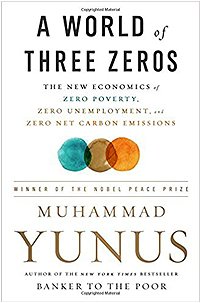Reform U.S. foreign aid to focus on reducing poverty
The Seattle Times
Only about half of U.S. development assistance is primarily for the purpose of reducing poverty. Use establishments benchmarks to reform foreign aid by focusing on the poorest, setting targets based on measurable goals and monitoring results.
OUR economic troubles are serious, shaking our confidence in ourselves and in our institutions. In the midst of shrinking retirement portfolios, disappearing jobs and vaporizing dreams of college, our energies can be consumed by thoughts of self.
The statistics on the world's peoples are difficult to internalize. UNICEF reports more than 25,000 children die every day because they lack clean water, adequate nutrition and the basic immunizations that we take for granted. A quarter of developing-world children are undernourished.
Seventy-two million children of primary-school age in the developing world were not in school in 2005, 57 percent of them girls. The world's richest 20 percent consume 76.6 percent of resources while the poorest 20 percent consume just 1.5 percent of resources. The World Bank tells us that 880,000 million people survive on less than a dollar a day, and half the world, some 3.14 billion, must do with less than $2.50 a day, the price of an Americano coffee.
Nobel Laureate and Bangladeshi economist Muhammad Yunus, frustrated by the irrelevance of accepted development theory, showed that poverty-mired women were capable of helping themselves when trusted with small loans, averaging $75. The default rate is about 2 percent and the experience has been replicated in many other countries. Borrowers get capital to buy a cow to sell dairy products, a chicken for eggs, straw for basket weaving and other capital needs that can bypass the usurious village money lenders.
To extend Yunus's model, the Microcredit Summit Campaign was launched in 1997, with the goal of getting microcredit to 100 million of the poorest of the poor.
This month, the Microcredit Summit Campaign reports their model works, with more than 106 million of the world's poorest families receiving a microloan in 2007.
In his inaugural address, President Obama urged us to look outward to the world, realizing our common humanity:
"To the people of poor nations, we pledge to work alongside you to make your farms flourish and let clean waters flow; to nourish starved bodies and feed hungry minds. And to those nations like ours that enjoy relative plenty, we say we can no longer afford indifference to suffering outside our borders; nor can we consume the world's resources without regard to effect. For the world has changed, and we must change with it."
Only about half of U.S. development assistance is primarily for the purpose of reducing poverty. Much of U.S. assistance is directed to strategic allies for political reasons, regardless of their economic and social need.
Our foreign aid needs to be refocused on reducing poverty. We have the opportunity to change our foreign aid with the focus based on proven methods that worked so well with the Microcredit Summit Campaign:
• Focus on the poorest of the poor;
• Set targets to achieve bold and measurable outcomes such as the Millennium Development Goals and those of the Microcredit Summit;
• Monitor progress to ensure we achieve results.
Following this model will, as President Obama said, allow us "to spend wisely."
The price and the promise of our citizenship is to get involved. Write to your senators and representative to make foreign-aid reform a legislative priority that will bring hope and opportunity to the poorest of the poor, "not out of charity, but because it is the surest route to our common good."
Dr. Larry Donohue is a retired physician living in the Seattle area.
Copyright © 2009 The Seattle Times Company


